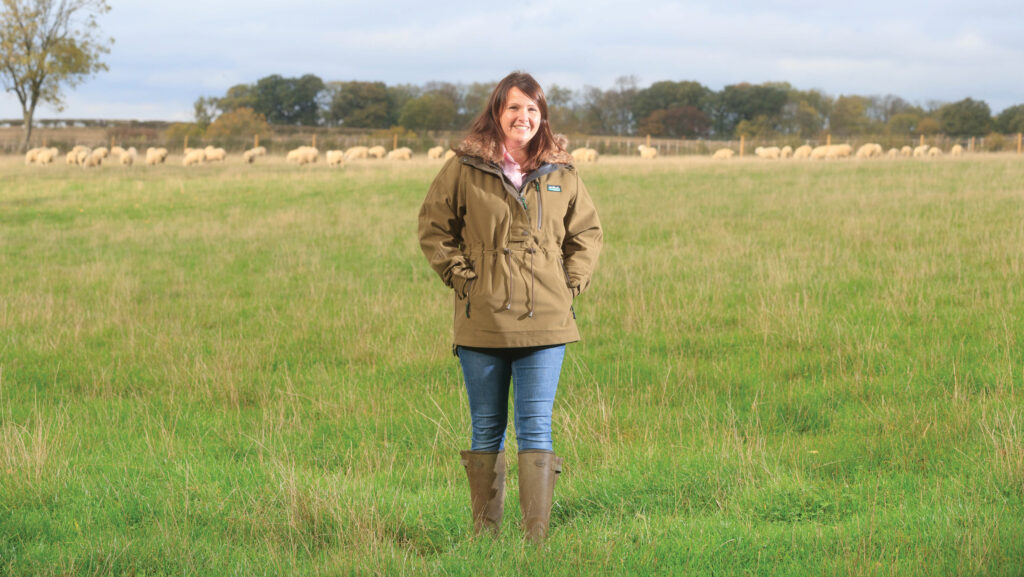Farmer Focus: Turnout headaches during lambing after wet weather
 Louise Elkington © Tim Scrivener
Louise Elkington © Tim Scrivener We’ve had our busiest month ever with direct sales. We think some customers are coming to us because many local butchers are selling less lamb, as there’s just not enough margin in it for them.
It’s great to see farmers finally getting a good price for their lamb. Sometimes we think it might be easier – and maybe more profitable – to sell everything deadweight and avoid all the extra costs and work that direct selling creates.
Then we remind ourselves that prices are not fixed, and these could drop.
See also: How lambing data helps closed flocks run smoother
Indoor lambing is done and dusted. Only a couple of shearlings lambed a week after a three-week lambing period.
Lambing went well: losses were at 6%. Ewes have had plenty of milk and we had only one case of watery mouth. We religiously muck out and lime individual pens after every ewe, which we think is worth the extra work.
The turnout fields were so wet (and still are), which made life hard. We had to keep ewes and lambs housed in pens a little longer than we would normally, just so they were a bit stronger.
However, we believe they do better outside, and staying inside too long can cause other problems. Despite this, the lambs look well and seem to be coping better than the shepherds.
We are now straight into lambing the outdoor-lambing flock of 250 ewes, which all go to maternal sires (either Aberfields or Highlanders from Innovis).
We started off slightly earlier than planned, with a few shearling twins that each lost one lamb, but now we are in full swing everything is going much better. They are good, strong lambs, up and suckling quickly.
We tag and record all our lambs once they have been cleaned off and have a belly full of milk. I think recording data has helped us improve our flock.
Anything that hasn’t mothered its lambs well gets moved to the indoor flock for a last chance, and we cull out ewes that have had lambs with poor growth rates. It takes a little extra time, but it’s definitely improved flock performance.

